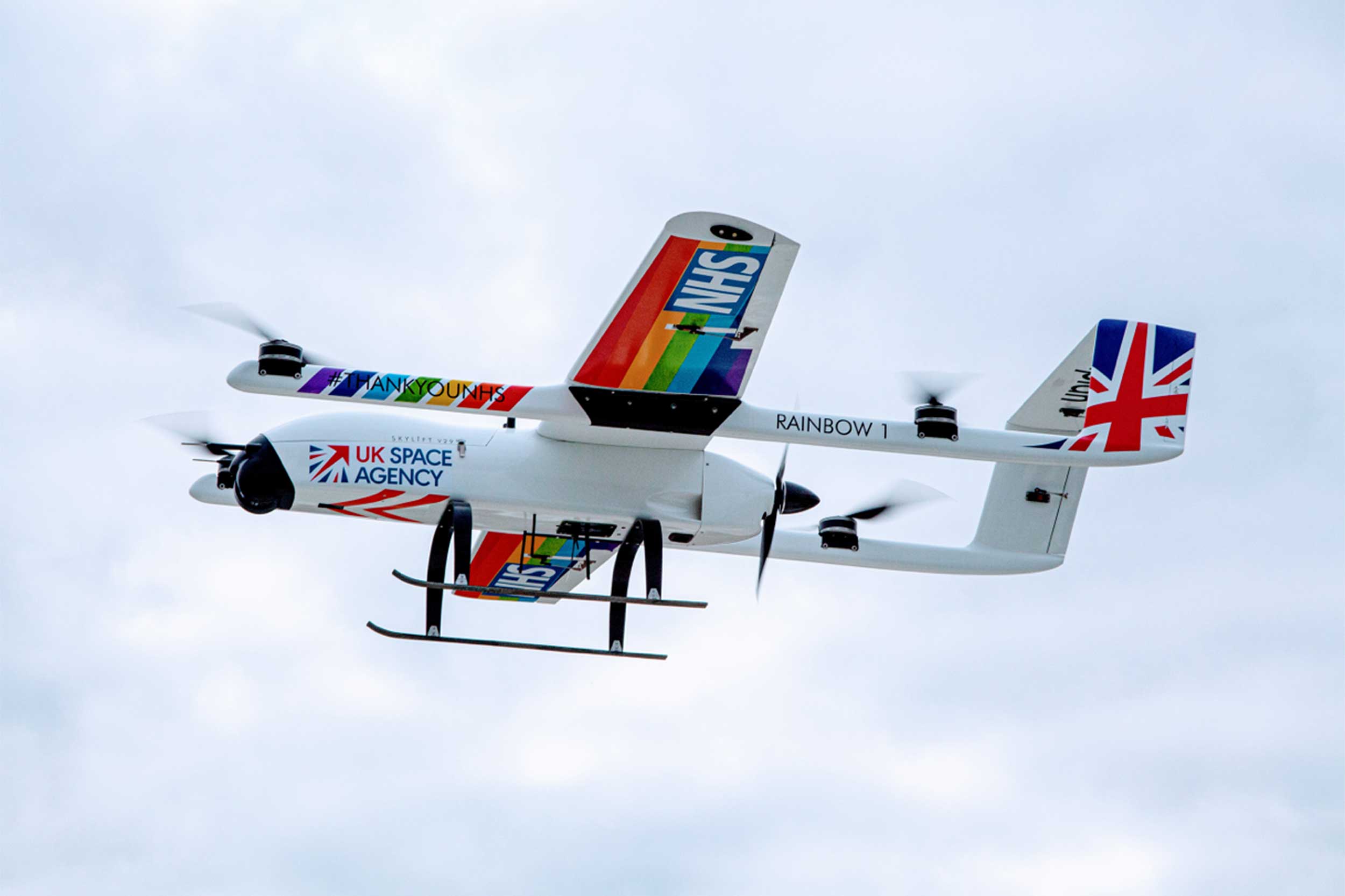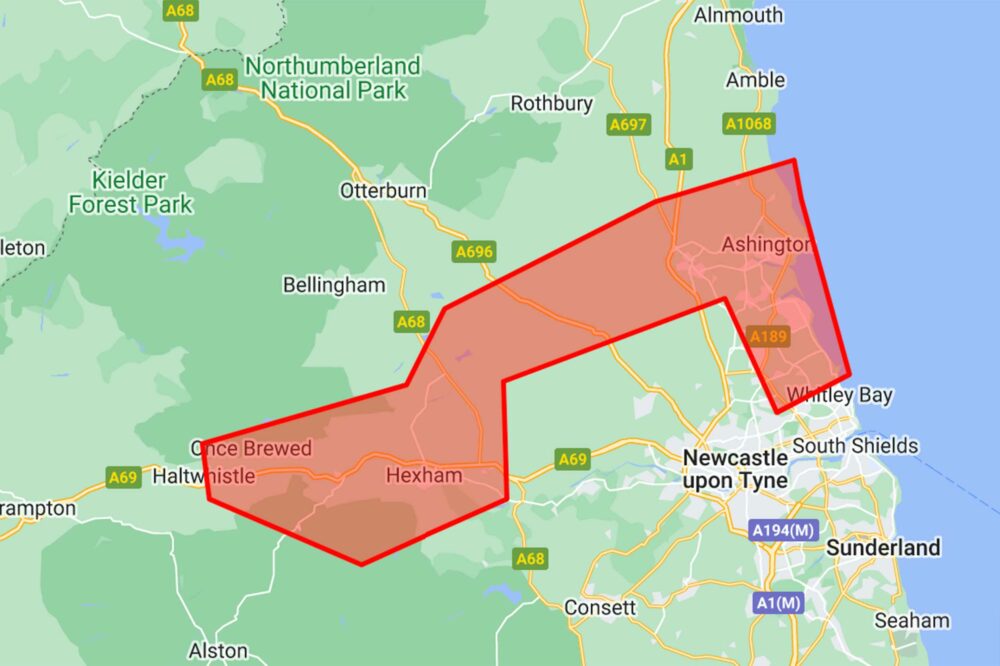Light aviation across a huge area of the north-east of England will be devastated if an airspace change to allow NHS drone delivery trials goes ahead as proposed.
The airspace change, ACP-2023-015, will create a Temporary Danger Area (TDA) across a swathe of airspace around Northumbria.
According to local pilot and occasional FLYER contributor Paul Kiddell, the TDA: “closes two grass airstrips, blocks the busy East Coast VFR coastal transit route under the Newcastle CTA, creates choke points that will result in a large increase in traffic seeking Newcastle zone transits/Spadeadam D510 crossings and is unreasonable in its vertical planning, extending to around 1500ft AGL in the busy Tyne Valley transit route”.

A consultation is underway and pilots and other groups affected are urged to make their feelings known (see Paul Kiddell’s response below).
The airspace change proposal can be found here. To comment, use the form under the heading Cover letter and feedback form 28 July 2023. The consultation period ends on 22 September 2023.
The drone trial, called the Apian Northumbria NHS Air Grid, is proposed by London-based firm Apian which describes itself as a ‘medical drone startup founded by NHS doctors in training and ex-Googlers’. Venture capitalist Jamie Macfarlane, who is listed as a director, described Apian as ‘mavericks’ in a tweet.

Apian says in its ACP, “We would like to trial a regular, on-demand delivery service for the distribution of medical payloads such as, prescription medication, medical implants, medical electronics, blood packs, medical and consumable supplies, medical documentation, as well as emergency deliveries.
“These flights will allow us to research, validate and provide vital data to establish whether the use of UAS, in these clinical settings will lead to improved patient care.”

Paul Kiddell’s response to the airspace change proposal
Bottom Line
I object to the ACP in the strongest terms as the TDA design completely fails to adhere to the CAA requirement to minimise impact on other air users. It closes two grass airstrips, blocks the busy East Coast VFR coastal transit route under the Newcastle CTA, creates choke points that will result in a large increase in traffic seeking Newcastle zone transits/Spadeadam D510 crossings and is unreasonable in its vertical planning, extending to around 1500ft AGL in the busy Tyne Valley transit route.
Area B
The East coastline under the base of the 1500ft Newcastle CTA is a busy transit route for VFR GA traffic and also allows non-radio traffic to move freely. Area B (SFC-1300ft) effectively blocks this route and will force east coast traffic to seek a formal zone transit with Newcastle ATC at a time when Newcastle ATC is short-staffed and operating with reduced hours. The only option for non-radio traffic will be to head 4 miles out to sea, significantly increasing risk for these air users who are traditionally historic aircraft or basic microlights.
Area C & D
When active, Area C closes the Hexham and Stanton airstrips that have operated for many years and are home to a variety of LAA, BMAA and historic aircraft.
The design uses a blunt approach of 600ft AGL above tallest known feature, giving 1750ft AMSL in Area C and 2000ft AMSL in Area D which results in much of the TDA being 1000ft-1500ft AGL rather than the desired/claimed 600ft AGL. The Tyne valley is a primary coast to coast transit route for both civil and military traffic in the North and the proposed 1750ft/2000ft TDA base will prevent 500ft-1000ft AGL valley transits when the cloud base is low. This will severely restrict GA coast to coast access.
DACS
Apian claim “Due to the heights of the proposed TDA complex (600 ft AGL above the tallest known feature), a Danger Area Crossing Service (DACS) will not be provided.”. A DACS would allow both Stanton and Hexham to operate whilst allowing the continued flow of the busy Coastal and Tyne Valley VFR transit routes which can achieve 1000ft AGL within the majority of the TDA. The onus should be on Apian to resolve rather than a disingenuous and misleading statement.
TDA Activation
During previous UAS operations on the Northumberland Coast, I didn’t see any evidence that Apian cancelled TDA activation by fresh Notam when operations were suspended for weather or serviceability, often for days on end. Instead airspace remained blocked to other users despite it being unused for days. Apian should release airspace once it is clear operations will be suspended. In the interest of transparency, Airspace usage statistics (days/hours flown v days/hours Notamed) should be publicly available to both the GA community and the regulator.
Summary
The extensive nature of this TDA will severely and negatively impact other air users in Northern England. I believe this trial only becomes viable when certified Detect and Avoid Technology is available enabling co-existance rather than implementation via a TDA. By progressing the TDA option, the wider flying community is being hugely restricted and put at significant risk which is totally unacceptable.















